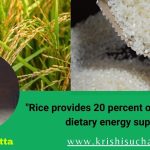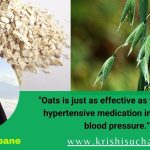Kaguno (Foxtail millet): Cultivation in Nepal and Its Significance

Introduction
Foxtail millet (Setaria italica) is the most commonly grown species of millet after pearl millet (Pennisetum glaucum). It is a self-pollinating crop with chromosome number, 2n = 18, classified under the family Poaceae and subfamily Panicoideae. It has a long history of cultivation in East Asian countries mainly China, where it has been grown since the sixth millennium BC. At present, it is grown for food and feed. In the USA it is mainly preferred for high quality hay. It is also known as Italian millet, German millet or Hay millet but locally known as Kaguno in Nepal.
In Nepal, it is mostly cultivated in marginal and non-irrigated condition of mid and high hills, particularly the Karnali region. Major foxtail millet growing districts in Nepal are Mugu, Kalikot, Humla, Jumla, Bajhang, Bajura, Dolpa, Lamjung, Gorkha, Ramechhap, Kavre, etc., where crop is grown sole as well as inter-cropped with finger millet, proso millet, beans.
Climate and Soil requirement
It exhibits high photosynthetic efficiency,nutrient-dense, locally available, and climate resilience with high adaptation to drought under low fertility conditions and other biotic and abiotic stresses. For its incomparable adaption in low fertility and drought conditions, foxtail millet is widely adapted to mountainous areas of Nepal. It can be grown in tropical as well as sub-tropical upto an altitude of 2,100m. It is a heat loving plant and for its germination the minimum temperature required is 8- 10°c.
A mean temperature range of 26-29°c during the growth is best for proper development and good crop yield.It produce well on well-drained loamy soils. It will not stand water-logged soils and extreme drought. Soil pH between 5.5 to 7.5 is favorable for foxtail millet cultivation.
Land preparation
Foxtail millet is cultivated inter cropped with finger millet, proso millet, so in this case it is not necessary to do separate field preparation for it. But under sole cropping, for both direct seeded and transplanted, field preparation should be done. Seed of finger millet is small in size, so the field should be friable and weed free. Tillage operations and machineries used are similar to maize cultivation. Primary tillage operation includes one deep ploughing by local plough or cultivator followed by planking. Secondary tillage operation includes 2-3 times harrowing by local plough, harrow or rotavator followed by planking.
Seed and sowing
The seed rate depends on the type of farming method and variety. On an average 8 to 10 kg/ha seed rate is required in case of sowing where as 15 kg/ha seed rate is required in case of broad casting method. The ideal time of sowing foxtail millet is June to august for rain-fed crop and for summer irrigated crop, the best time is January. One can practice a suitable spacing of 25 cm x 10 cm and sowing depth differs from 2 cm to 3 cm.
Water management
This crop can survive in drought conditions and requires minimal water.However, if the monsoon is irregular, irrigation should be done at tillering and flowering stages, as these stages are critical to water requirement. In case of heavy rain , of floods, the field should be drained out by making ridges and furrows.
Weed management
Weed free environmennt is essential for any successful crop farming. Wedding may be done twice; 15 tp 20 days after emergence and about 15 days later after first weeding. Generally, manual weeding is done with the help of hand hoe.
Pests and Diseases
Some of the common diseases in foxtail millet farming are; ‘leaf and head blast’, ‘green ear’ and ‘Kernel smut’. Leaf and head blast disease is caused by “Magnaporthe grisea” where as green ear caused by “Sclerospora graminicola” and smut disease is caused by “Ustilago crameri”.
Harvesting of Foxtail Millet
Foxtail millet can be harvested for green fodder or hay after 70 to 75 days of sowing dependin on the variety. When harvesting foxtail millet for seed production, it must not be cut until completly ripe. It is harvested by cutting the panicle with sickle. The panicles are mashed by hands or feet to separate grain from panicle. It is sun dried and dehusked in dhiki three times before it is finally ready to cook and eat.
Nutritional Value and Uses
Foxtail millet grain contains 12.3% protein, 4.3% fat, 60.9% carbohydrates, 14.0% dietary fibre and 3.3% minerals, with 31g calcium, 290 mg phosphorus, 5mg iron and vitamins than major staple crops rice and wheat. Foxtail millet (Kaguno) is the third important crop among group of millets with wide range of utility in Nepal. This crop is associated with traditional values and food culture of mid-hills and high hills of Nepal as well. Grains of foxtail millet are used to prepare regular staple diet bhat (steamed rice) and khir (pudding) while Dhido (porridge), breads, thukpa (Tibetan noodle),laddu (Nepali sweet), and puwa (kind of pancake) are prepared from its flour. It is also used in fermented form as chhyang and chhyangkhol (local liquors) by different ethnic groups of Karnali region.
The crop has tremendous utility and application in baking and noodle industries. Foxtail millet is valued by mountain farmers for its nutritional content and health promoting properties, ability to grow under low external input conditions and tolerance to extreme environmental stress, particularly drought. It is also recently appreciated because of medicinal benefits such as reducing blood glucose levels and cholesterol control in normal as well as diabetic patients.
Conclusion
Drawing upon the serious food insecurity issues and continually growing impacts of climate change on livelihood, diversity sourcing of climate-resilient, nutritionally rich crops like foxtail millet through diversity assessment and on-farm evaluation could be a reliable avenue to meet farmer’s need and improve food security in the extremely mountainous agro-ecology of Nepal and elsewhere. Despite it being underutilized by minor crops in the country, it has the potential for improving the nutrition and health security of the growing urban and global population in the changing climate and other natural environments.
Writer: Jeevan Chaudhari (Student, Bsc. Ag IAAS Paklihawa Campus)

 दिल्लीको होटलमा बसेर क्यानडा र अमेरिकामा मानव तस्करी
दिल्लीको होटलमा बसेर क्यानडा र अमेरिकामा मानव तस्करी  अनलाइन जुवा खेलाएर काभ्रेका अनिलले गरे दुई अर्बको कारोबार
अनलाइन जुवा खेलाएर काभ्रेका अनिलले गरे दुई अर्बको कारोबार  मुख्यमन्त्री सोडारीले विश्वासको मत लिन सुदूरपश्चिमको प्रदेश सभा बैठक आव्हान
मुख्यमन्त्री सोडारीले विश्वासको मत लिन सुदूरपश्चिमको प्रदेश सभा बैठक आव्हान  अफगानिस्तानमा बाढीबाट ३१५ भन्दा बढीको मृत्यु
अफगानिस्तानमा बाढीबाट ३१५ भन्दा बढीको मृत्यु  सुँगुरको मिर्गौला प्रत्यारोपण गरिएका रिचर्डको निधन
सुँगुरको मिर्गौला प्रत्यारोपण गरिएका रिचर्डको निधन 


